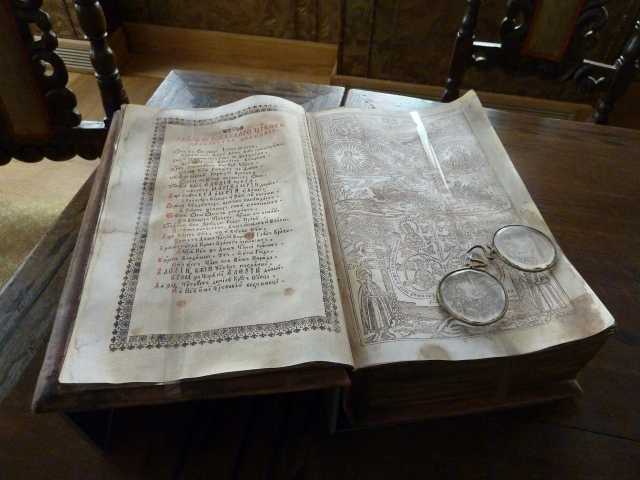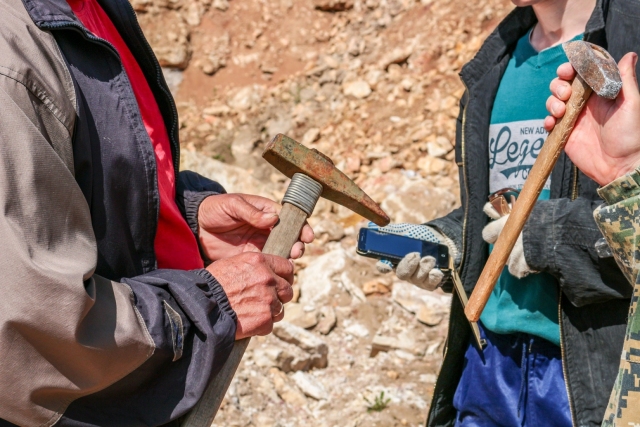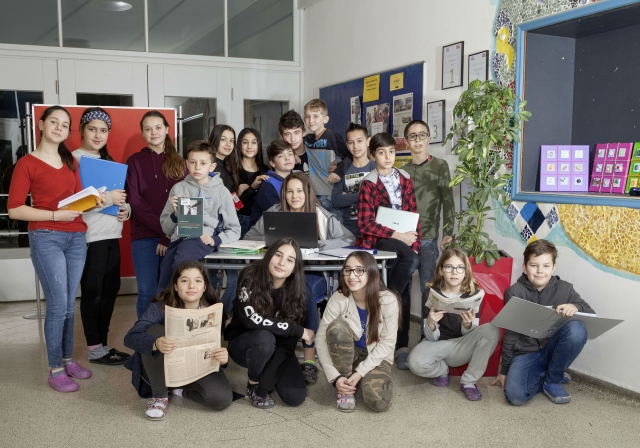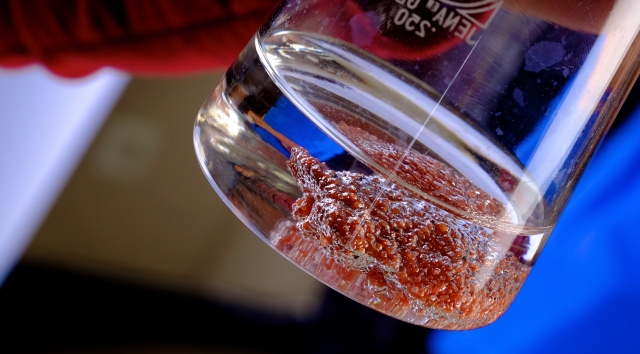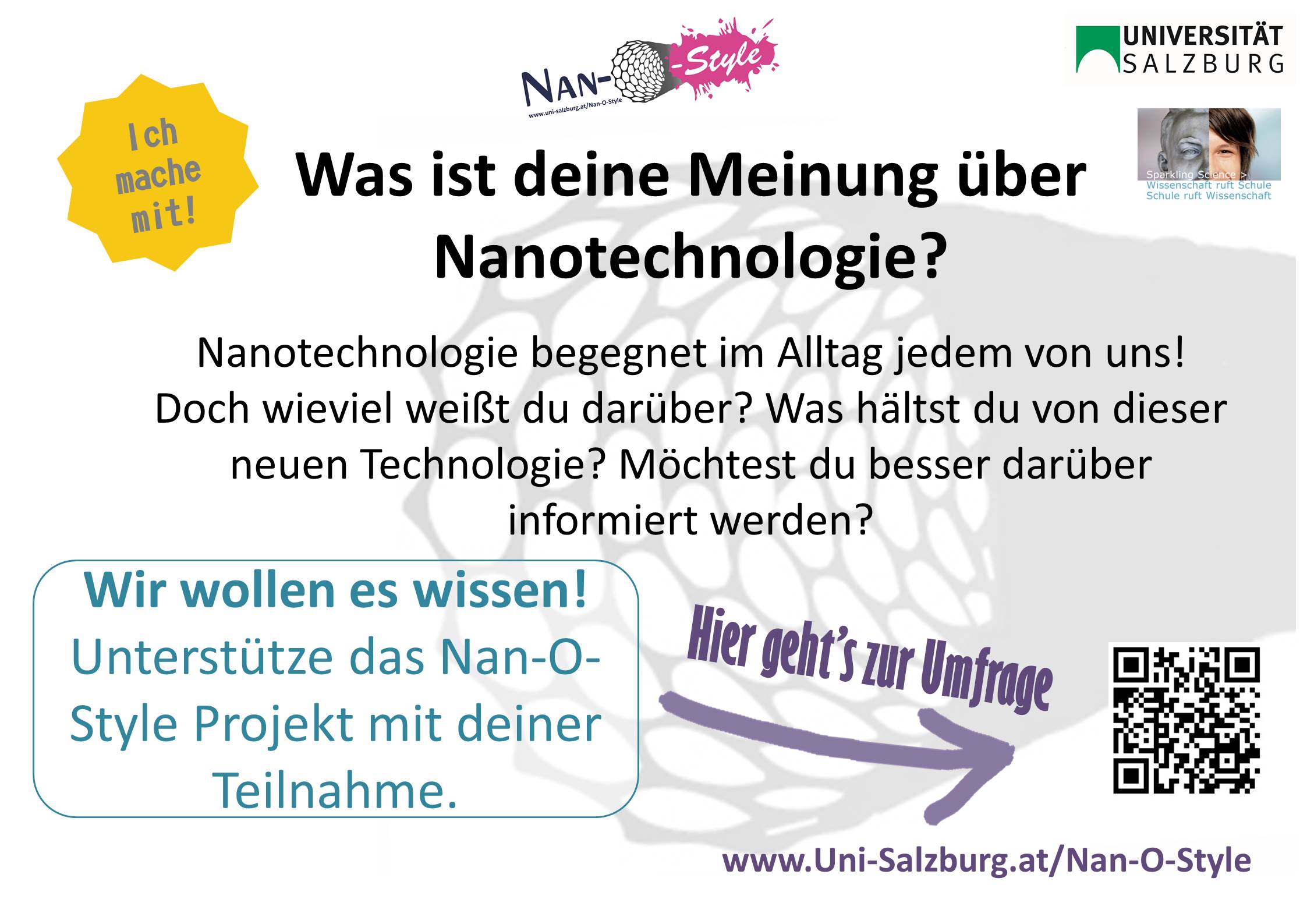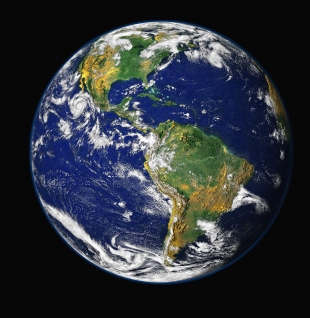
Florian Heigl
Viel-Falter: Butterfly Monitoring
In Viel-Falter: Butterfly Monitoring volunteers, together with researchers from the Department of Ecology of the University of Innsbruck, observe, identify and count butterflies. The aim is to build up and establish an Austria-wide systematic butterfly monitoring.
Butterflies are an excellent indicator group for the ecologically extremely important animal group of insects. They react quickly and sensitively to habitat and environmental changes. Butterflies are also excellent for raising awareness of the importance of biodiversity due to their positive image.
Given the diverse habitats in Austria, 4,095 different species of butterflies live here, considerably more than in the much larger Germany. At the same time, many butterfly species are threatened and even species that used to be common are seen more rarely. The main causes for this downturn are changes in land use, intensification in agriculture and use of pesticides. Precise statements are difficult, however, as there are hardly any long-term monitoring programs to date. This is exactly what will change thanks to the Viel-Falter: Butterfly Monitoring.
In the Viel-Falter: Butterfly monitoring, surveys by volunteers (Citizen Science) are combined with professional scientific surveys. Thus, the advantages of two approaches are used to collect high quality and scientifically sound data. Thereby, the Viel-Falter butterfly monitoring also makes an important contribution to an Austrian biodiversity monitoring as well as an EU-wide butterfly monitoring.
At the same time, the monitoring contributes to raising awareness of the importance of biodiversity by involving volunteers. Education and public relations are therefore an important part of the Viel-Falter: Butterfly monitoring. At regular training and education events, participating volunteers and other interested parties can improve their knowledge and species awareness and make an important contribution to nature conservation.
Online course on butterfly monitoring
To ensure good data quality, intensive and personal training and support of the volunteers involved is of great importance. Our online course makes it possible to address many interested parties while maintaining a high level of quality. The course explains what biodiversity monitoring is, why it is important, and how butterfly monitoring works. The course is concluded by an individual personal meeting.
Click here for the blog post that introduces the course in more detail (in German).
Our aims are:
- Knowledge-based decisions instead of flying blind!
- Systematic and long-term monitoring of butterfly stands in Austria.
- Building a reference data set on the occurrence and development of butterfly populations in Austria, especially in the Alps.
- Making an essential contribution to monitoring biodiversity in Austria.
- Raising awareness for the importance of biodiversity and the preservation of regional biodiversity.
- To contribute to an Austrian biodiversity monitoring as well as to the European butterfly monitoring.
- Integration or creation of interfaces to surveys of other animal groups, especially insects.
How can you participate?
Anyone interested in butterflies can observe butterflies with a simple identification guide for butterflies in predefined locations in Austria. The observations will be carried out several times a year. No previous knowledge is required. The Viel-Falter team will offer personal training tailored to the individual volunteer.
Partners
The Viel-Falter: Butterfly Monitoring is managed by the Department of Ecology of the University of Innsbruck and implemented together with the Natural Science Collections of the Tyrolean State Museums and EURAC.
It is part of the Insect Monitoring Austria: Butterflies funded by the Federal Ministry for Climate Protection, Environment, Energy, Mobility, Innovation and Technology (BMK), the Butterfly Monitoring Tyrol funded by the Department of Environmental Protection of the Province of Tyrol and the Butterfly Monitoring Vorarlberg supported by inatura, the Province of Vorarlberg and the Blühendes Österreich Foundation.
Gallery
-
 Argynnis niobe Argynnis niobe
Argynnis niobe Argynnis niobe -
 Parnassius apollo Parnassius apollo
Parnassius apollo Parnassius apollo -
 Butterfly workshop with volunteers Butterfly workshop with volunteers
Butterfly workshop with volunteers Butterfly workshop with volunteers -
 Enthusiastic volunteers Enthusiastic volunteers
Enthusiastic volunteers Enthusiastic volunteers -
 Volunteer with magnifying mug Volunteer with magnifying mug
Volunteer with magnifying mug Volunteer with magnifying mug -
 Small tortoiseshell (Aglais urticae) in magnifying mug Small tortoiseshell (Aglais urticae) in magnifying mug
Small tortoiseshell (Aglais urticae) in magnifying mug Small tortoiseshell (Aglais urticae) in magnifying mug -
 UNESCO award for Viel-Falter UNESCO award for Viel-Falter
UNESCO award for Viel-Falter UNESCO award for Viel-Falter
https://www.citizen-science.at/en/immerse/worldwide/author/934-florianheigl?start=140#sigProIdb80cbcc8dc
GenTeam
The European genealogy database
"Connecting genealogists"
GenTeam is a European platform of genealogical databases. Both scientists and amateur genealogists can make their data available here for free for other researchers. The cooperation of collaborators from many different countries has made it possible to compile databases that one researcher could not typically manage alone due to the volume. Our focus is currently on the indexing of ecclesiastical sources from Lower Austria, on a baptismal and death index of Vienna, as well as on an overall index of Austria-Hungary's casualty lists from the First World War. The baptismal index of Vienna between 1784 and 1900 alone will probably comprise about 4 million data records, of which more than 3,000,000 have already been recorded. They will in turn become the basis for scientific research. Of the approximately 3 million data of the loss lists, more than 2 million have already been recorded.
The more than 64,000 registered users currently have more than 21 million records available. These users come from a variety of countries from around the world. They are primarily genealogists, although there are also scientists, historians and biographers who increasingly make use of this resource. GenTeam is free and there is no membership fee.
All voluntary membership is more than welcome!
Project coordinator Felix Gundacker made the platform available with GenTeam (and also promoted its potential), while researchers and research groups have the option to provide data and forward these lists to coordinators (sometimes after prior query/consultation). To conclude, the coordinator ensures that all data is put online.
“Soon, everyone who visits the GenTeam site will ask themselves how they got by without this fantastic source!”
Dr Peter Braunwarth, 2011
https://www.citizen-science.at/en/immerse/worldwide/author/934-florianheigl?start=140#sigProId6d08090a96
Mineral deposits in Austria
Austria is rich in a wide range of mineral deposits. Precise documentation of both “old” deposits (e.g. mining heaps and tunnels, slag heaps) and “new” location spots (e.g. quarries, natural outcrops, road cuts, etc.) is one of the focuses of the Department of Mineralogy and Petrography at the Natural History Museum Vienna. This can be achieved only with the help of mineral collectors, amateur mineralogists and members of the general public interested in mineralogy who collect minerals and make them available to scientific experiments. The outstanding collaboration with collectors with regard to documenting mineralogy in Lower Austria (“NÖ mineral database”) and Vorarlberg should be expanded to other federal states. Tyrol in particular is still relatively unexplored in comparison to other federal states.
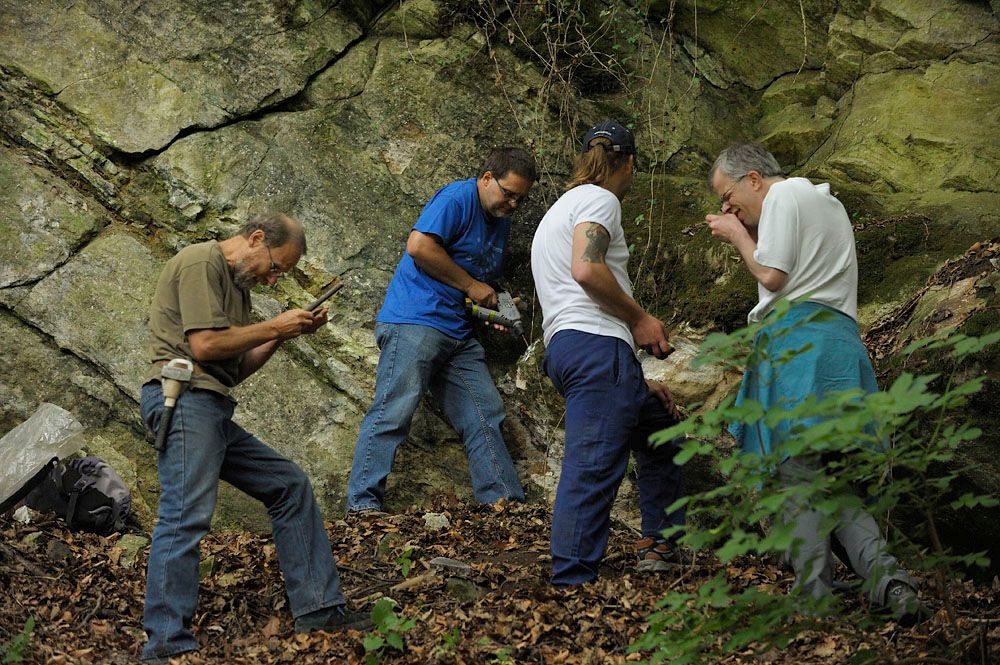
© Harald Schillhammer
Who can participate?
Mineral collectors, amateur mineralogists and members of the general public who are interested in mineralogy.
Time period
The project is running for an unspecified period.
Where?
Across all of Austria (especially Tyrol).
What data is needed?
Citizen scientists can support research by collecting minerals and documenting mineral discoveries, as well as providing samples for mineralogical analyses. The results of scientific analyses will usually be published in popular scientific publications (in German) (e.g. as “Neue Mineralfunde aus Österreich” [New minerals found in Austria] in the journal “Carinthia II” or, more rarely, in the journals “Der Steirische Mineralog”, “Der Aufschluss”, “Mineralien-Welt” or “Lapis”), whereby the project manager sends the final article to all participants in PDF format. Articles in “Carinthia II” generally become open access one year after publication, which means that anyone can download them for free.
Shortly after publication, the project manager will enter the new mineral analyses in all publications, together with meaningful photos, into freely accessible international mineral and mineral location databases, such as Mindat (in English) and Mineralienatlas - Fossilienatlas (in German).
The publications are often written in co-authorship with the finder, especially if they provided important information through good documentation of the discovery and circumstances of finding, or through research into literature in archives and by surveying residents at the location.
Exceptional scientific results will also be published in international, English-language scientific journals.
Examples of popular science publications from recent years are:
- Journal "Carinthia II": Neue Mineralfunde aus Österreich LXV (2016) [PDF]
- Journal "Carinthia II": Neue Mineralfunde aus Österreich LXVI (2017) [PDF]
- Die Mineralogie der weltweit einzigartigen Schlacken von Waitschach, Kärnten [The mineralogy of globally unique slag from Waitschach, Carinthia] [PDF]
- Kolitsch, U. & Slama, M. (2016): Zur Mineralogie des niederösterreichischen Anteils des Semmering-Basistunnels: ein erster Bericht. [Mineralogy of the Lower Austrian part of the Semmering Base Tunnel: a first report] Der Steirische Mineralog 31, 20-27. [PDF on e-mail request]
- several individual contributions in: Walter, F., Auer, C., Bernhard, F., Bojar, H.-P., Brandstätter, F., Grill, J. A., Kiseljak, R., Knobloch, G., Kolitsch, U., Lamatsch, P., Lenz, C., Löffler, E., Melcher, F., Postl, W., Prasnik, H., Rausch, L., Reicht, M., Schachinger, T., Schillhammer, H., Schreieck, E., Schwabl, S., Steck, C., Steiner, T., Trattner, W. & Weißensteiner, G. (2020): Neue Mineralfunde aus Österreich LXIX. Carinthia II, 210./130., 153-218. [PDF]
How can I take part?
If you are interested and/or want to take part, please contact:
Priv.-Doz. Dr. Uwe Kolitsch
This email address is being protected from spambots. You need JavaScript enabled to view it.
CSNA
Citizen Science Network Austria
In 2017 the Citizen Science Network Austria was founded, which is coordinated by the University of Natural Resources and Applied Life Sciences. This network aims to further develop citizen science in Austria, to promote quality and to strengthen the dialogue between science and society.
In order to formalise these tasks of the network, a Memorandum of Understanding was signed by all member institutions of the network. The most important excerpts from this MoU are listed here:
These institutions from the fields of science, research, education and practice declare to pursue the following objectives, taking into account the respective institutional scope of their activity:
- To establish citizen science more strongly in Austria
- To promote the quality of citizen science in Austria
- To strengthen the profile of citizen science in Austria
These member institutions declare that, in order to achieve these objectives, they intend to fulfil the following tasks in particular:
- Participation in annual meetings within the framework of the Austrian Citizen Science Conference.
- Use of the online platform Österreich forscht (www.citizen-science.at) to make citizen science and citizen science projects visible to the public.
- Establishment of and active cooperation in working groups on specific topics by representatives of the signatory partner institutions.
You will find a list and short introduction of all member institutions in the Partners section. In addition, the Citizen Science Network Austria also enters into partnerships with international networks. Individual agreements on cooperation are made with these networks. A list of the international partners can be found under the heading International Partners. In addition, the Citizen Science Network Austria is also pleased to welcome supporters who support the network or the platform Österreich forscht, especially through their activities. These can be found in the category Supporters.
Since 2017, we have reported on the accomplishments of the Citizen Science Network Austria in the form of an annual performance report. These performance reports can be found in the section performance reports of our website.
Faces of migration
This project ran from 01.07.2017 to 31.12.2019. You can download a thematic booklet created in the process at the bottom of this page. In addition, print copies can now be made available to school classes free of charge (while stocks last). Please contact the project leaders if you would like to use them for teaching.
Faces of migration. Youth from Tyrol collaborated to research their family histories of migration
Studies in social history have documented time and again that migration has always been part of the human existence. If migration movements are as old as human history itself, world history can be read as a story of mobility. In today's world, international references have become part of day-to-day life – whether we are shopping, eating in a restaurant, watching television, at the cinema, maintaining a certain lifestyle or taking political action. These everyday situations in which we find ourselves and in which we act build our biographies and our familial references. They are also involved in many ways in events that cannot exclusively be defined locally, even if they manifest in a locally specific manner.
It is with this in mind that, together with their (grand)parents, teachers and friends, youth from Tyrol researched their family histories of migration and searched for traces of mobility in their neighbourhoods. They also gained broad support from universities and civil society. The project’s active network, which is based at the Institute for Educational Science in the Migration and Education learning and research field, includes:
- Research Centre for Migration and Globalisation, University of Innsbruck
- Office of Tyrol Regional Government, Dept. Society and Labour – Integration
- Künstlerhaus Büchsenhausen
- Tirolean State Museum
- Center for Migrants in Tyrol (ZeMit)
It also included citizens from the Innsbruck/Pradl and Fulpmes Tirolean research areas, who wrote reports on the history of migration in their areas or provided documents that were relevant to the project (e.g. artefacts of migration).
Investigating stories of migration in your own family
Why not take a look into your own family history? You can refer to family migration experience if, for example, an uncle emigrated to Canada for professional reasons or if your grandparents moved to Tyrol from the capital city through internal migration. Our regions of experience cover the entire world. In this way, multiple affiliations are possible and there are a variety of examples of this from multi-home day-to-day life:
A pupil from Tyrol meets her best friend over Skype and regional borders. Every week, a university assistant commutes between his home and work. During the week, he works in Vienna and at the weekend, he spends time with his family in Innsbruck. It is a long car journey from Tyrol to Serbia, especially when the children are excited about Gran’s baklava. One teenager is immersed in several languages a day: he speaks German with his sister, Kurdish with his mother and a regional dialect with his best friend.
In this research project, young people are experts in their life experience and actively shaped the entire research process: they developed their own research questions, which they then answered with the help of open interviews with parents and relatives. Furthermore, the young people used ethnographic field research to search for traces of migration in their immediate area and district.
What do family migration stories mean to me?
From a scientific perspective, it was then asked how migration is perceived and evaluated in individual families and whether there is a knowledge or awareness of migration. The artefacts of migration, and other items, brought into project lessons and schools helped with this.
Based on the knowledge obtained on family and location-specific histories of migration, the young people organised a final event in Innsbruck. The research results were also entered into an online notebook, which was largely aimed at schools and the general public. On the one hand, this project made a significant contribution to researching family stories of migration and the city. On the other hand, the findings from the project should serve to create another form of awareness of migration and diversity in your location.
Image gallery
(Click on an image to enlarge)
https://www.citizen-science.at/en/immerse/worldwide/author/934-florianheigl?start=140#sigProIdc7572d3be1
Project manager:
Prof. Dr. Erol Yildiz und Ass.-Prof. Dr. Marc Hill (Forschungs-Bildungs-Kooperationen), both Universität Innsbruck, Institut für Erziehungswissenschaft/Migration und Bildung
Contact: This email address is being protected from spambots. You need JavaScript enabled to view it.; This email address is being protected from spambots. You need JavaScript enabled to view it.
Scientific project staff: Mag. Miriam Hill, Anita Rotter MA
Student assistant: Alexander Böttcher, BA
Scientific cooperation partner:
Universität Innsbruck, Forschungszentrum Migration und Globalisierung
Partners from civil society, art, culture and politics
- Amt der Tiroler Landesregierung, Abt. Gesellschaft und Arbeit – Integration
- Künstlerhaus Büchsenhausen
- Tiroler Volkskunstmuseum
- ZeMit
Participating schools:
- NMS Vorderes Stubai, Fulpmes (Direktion: OSR Josef Wetzinger)
- UNESCO NMS Gabelsberger, Pradl/Innsbruck (Direktion: Brigitte Winkler-Greimel, MEd BEd)
Project duration:
1 July 2017 – 31 May 2019
Sponsor:
Sparkling Science/BMBWF
Project presentation
Tell us!
This project has already been completed. You can download the final report at the bottom of this page.
In “Tell us!”, we are looking for research questions on accidental injuries.
Medical advances need innovative ideas: your knowledge is valuable! Who knows best how occupational, traffic-related or sports injuries should be investigated and treated? With “Tell us!”, the Ludwig Boltzmann Gesellschaft has started to bring questions of accidental injuries into research.
Almost everyone suffers from an injury, whether from sports, at work or in a traffic accident, at some point. In “Tell us!”, we are looking for research questions on accidental injuries. Our goal is to research your questions.
We want to therefore include citizens in research because we are certain that through doing this, we can initiate innovative research.
Over a period of eight weeks, up to 8 May, research questions can be submitted on our website.
How can I take part?
Participation takes place online and needs about 10 minutes. You can submit your question(s) in either English or German. This all takes place on our website.
Do I need prior knowledge?
No, there is no need for prior knowledge. You do not need any research experience. We believe that not having any experience could be an advantage! All that you need is one, or a few, questions on accidental injuries and ten minutes.
What will happen with the results?
The results will first be collected by us and then systematically analysed. We will anonymise all of the submitted research questions using Open Knowledge Maps. This will allow researchers in the field of accidental injuries from all over the world to have access and incorporate these questions into their research.
This process will be carried out to ensure transparency and we want to include those who provided the ideas, if desired. This is very important to us!
To what is the research contributing?
Our approach to collecting research questions from patients’ practical experiences and systematically including them in research is unique in the field of medicine. “Tell us!” will contribute to having clinical knowledge flowing better into research, thereby enabling improvement in diagnosis, treatment and rehabilitation.
Take a look behind the scenes of this project in a science interview with Eva with project manager Benjamin Missbach.
City-Country-Child
An Intergenerational Ethnography on Rural Images of Longing
Taking the unique photography collection of the Austrian Museum of Folk Life and Folk Art as its starting point, the research project “Stadt-Land-Kind” (City-Country-Child) investigated the myth of a “better life in the countryside” from an intergenerational perspective. In dialogue with social scientists, and in exchange with older generations of parents and grandparents, pupils conducted research into prevailing urban/rural sentimental and ideological constructions and the corresponding images and meanings they produce. The project asked about the social models and (future) promises that are deeply rooted in images of the idyllic countryside. What do we say and what do we feel when we connect these often backwards-looking pictures with our present-day life? On the one hand, the project’s objective was to deconstruct conventional notions of authenticity that are often used in today’s images of the countryside by touristic, commercial and political branding. On the other hand, by way of asking what images we use to “write” our history of the countryside, the project aimed to update rural conceptions through a critical investigation of historically and culturally constructed motifs of longing, as well as by an active-reflexive production of new images of the countryside.
For two years – the entire duration of the project – we conducted our research in close cooperation with three partner schools from three rural regions of Austria: Waldviertel, East Tyrol and Bregenzer Wald. The schools were the Primary School Rastenfeld (Lower Austria), the New Middle School Kals am Großglockner (Tyrol) and the Werkraumschule Bregenzerwald (Vorarlberg). This constellation included three age groups as well as three different types of schools. Overall, more than 100 citizen scientists participated in the project, including the pupils, their families and further local participants. This enabled us to differentiate age- and region-specific perspectives. During the collective field research and image analysis three different methods were applied: intergenerational picture talks, photo expeditions (these first two methods were specifically developed for our project), and research postcards in the tradition of historical ethnographic field research. During the intergenerational picture talks, pupils shared their personal memories and experiences – elicited by historical and contemporary images of the countryside – as well as their knowledge and conceptions of the future of country life with their parents and grandparents, teachers and neighbours. During the photo expeditions the pupils produced new images of the countryside depicting their personal perspectives on their rural environment, which allowed us to consciously counter current visual politics as is often seen in advertising and the like. 108 photographs and 50 postcards entered the collection of the Museum of Folk Life and Folk Art as contemporary documents.
Based on our manifold findings and visual-material productions, we curated the research exhibition Retropia: Talking about Rural Images of Longing, which was on display from April to June 2019 at the Museum of Folk Life and Folk Art in Vienna. The exhibition fostered an understanding of the research process with contributions by the pupils. The Top Citizen Science expansion project, “Stadt-Land-Bild. A Social Image Analysis of Contemporary Conceptions of Longing,” continued our research with visitors in the exhibition space.
The exhibition illustrated our core finding that a new longing for the countryside is a highly relational phenomenon. Fantasies of a good life in the countryside are not necessarily linked to certain geographical regions, places or locations. Far more, they are shaped by biographical experiences and actual life conditions that come into play when talking about images in a multi-sensory and multi-perspectival way. Longing for the countryside particularly presented itself as an alternate construction to a person’s everyday life and to the present time. When comparing the different generations, parents seemed to have a strong desire for quietude and slowing down. Too, sensory-physical memories like handicrafts or hiking proved to be a strong reference to the country life for members of all generations. While these leisure activities are usually fun for the pupils, some members of the grandparent generation reacted to historical photographs with memories of times of deprivation; this introduced a critical perspective towards the “good old days.”
The different points of view and stories gathered from the Intergenerational Picture Talks, combined with the experiences from the active-reflexive image production with the pupils through photo expeditions and postcard workshops, brought about new and multilayered perspectives and insights for us. The impetus for educational policy resided in the exploration of an open concept of Heimat (“home”) and the enhacement of visual literacies among pupils and their families. There is scientific benefit to be gained from empirically observing today’s manifestation of the usually vaguely discussed phenomenon of longing for the countryside. Differentiation was achieved by content analysis as well as visual-material analysis.
Team:
Martina Fineder, Paul Reiter (Academy of Fine Arts Vienna)
Luise Reitstätter, Mark Elias Napadenski (University of Vienna)
Herbert Justnik, Astrid Hammer, Katharina Zwerger-Peleska (Austrian Museum of Folk Life and Folk Art)
Iris Ranzinger (photography, digital images, archive)
Project duration & project partners:
“City-Country-Child” was a project of the Academy of Fine Arts Vienna in cooperation with the Laboratory for Cognitive Research at the University of Vienna, the Austrian Museum of Folk Life and Folk Art, the Werkraum Bregenzerwald, the Primary School Rastenfeld, the New Middle School Kals am Großglockner and the Werkraumschule Bregenzerwald. It ran from 1 September 2017 until 31 October 2019. It was conducted through the grant program Sparkling Science, funded by the Federal Ministry of Education, Science and Research.
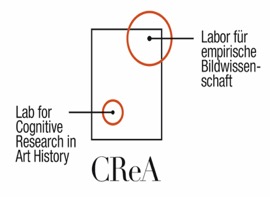 |  |  | 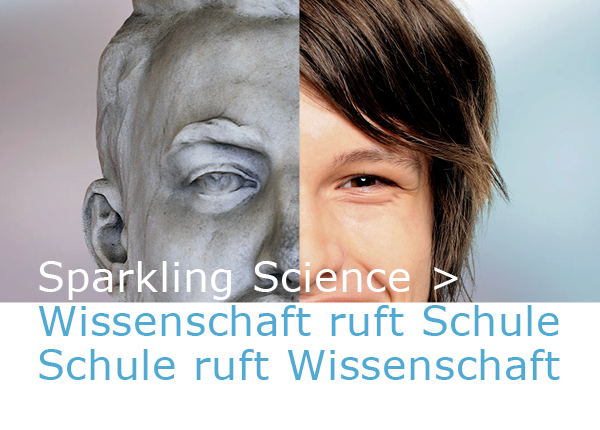 |
Nan-O-Style
Nan-O-Style is a research and education project by the University of Salzburg, Department of Biosciences.
What is Nan-O-Style researching?
Nan-O-Style researches the complex topic of nanotechnology. Together with Austrian schools, we want to discover new and previously unknown interactions between modern lifestyle products and nanomaterials. Are there undesirable interactions and do these change the properties of the product? Everyone encounters nanotechnology in day-to-day life. But how informed is the general public on this subject? – These are all questions that we want to answer with Nan-O-Style!

Collaboration between university and school
New, fresh ideas and scientific research converge. Through cooperations with international educational partners, interactive materials that go beyond research work are developed for interdisciplinary natural science lessons.
What do we want to learn from you?
Nanotechnology is already available in many day-to-day products. But what do you know about them? Was nanotechnology already covered in your education? Do you want to be better informed about nanotechnology?
How can you participate?
An online questionnaire will ask questions about nanotechnology and survey your personal stance. Visit us on our website, then go directly to the questionnaire (in German) at or scan the QR-code below and take part in the questionnaire.
Where can you find more information about nanotechnology?
On Tuesday, 26 February 2019, the Open NanoScience Congress (ONSC), a public conference on nanotechnology, took place in Salzburg. Pupils from the Nan-O-Style project by Sparkling Science actively participated in the conference and presented their work in a chaired poster session titled “Nano-Research Spotlights”. There were also keynote lectures by the invited experts and insights into ongoing research projects at the University of Salzburg. A nano exhibition with hands-on stations and analytical apparatus to measure nanoparticles rounded off the ONSC. Interested parties and school groups were very welcome. The programme and registration can be found at www.uni-salzburg.at/ONSC.
Online: Research results on nanomaterials and their impacts on people and the environment are made available to the public on the internet platform www.nanopartikel.info. The aim of this internet platform is to format current research results to be understandable for interested parties.
Who is involved in the project?
The Department of Biosciences at the University of Salzburg worked together with several partners on this project.
The schools involved are: BRG Lerchenfeld (Carinthia), BRG Schloss Wagrain (Upper Austria), BRG Solar City (Upper Austria), Gymnasium Ort (Upper Austria), HLW St. Veit (Carinthia), HLBLA St. Florian (Upper Austria), Multi Augustinum (Salzburg), HTL LMT (Upper Austria), PdC BORG Radstadt (Salzburg). The school network is overseen by Reinhard Nestelbacher at DNA Consult Sciencetainment.
Nan-O-Style also involves international partners, such as the ORT Moshinsky research and development institute in Tel Aviv, the cc-NanoBioNet German association and an educational partner in Barcelona (Nanoeduca).

Sparkling Science Project SPA 06/270 supported by BMBWF. Runtime: 1. Oktober 2017 - 31. Dezember 2019.
Citizen science worldwide
Citizen Science in Austria
Citizen science has been carried out in many parts of the world for some time now and since the mid-2010s, citizen science initiatives have become increasingly connected on a national and international scale.
Citizen Science has been practised in Austria for longer than the term Citizen Science has been used. In general, it can be assumed that many citizen science projects have been and are being carried out in Austria, but that they have been and sometimes still are referred to differently. Although citizen science as a term is now well established, pseudonyms for citizen science projects are still used, among others, Bürgerwissenschaften (literally “citizen science”), Freiwilligenforschung (“volunteer research”), Volkszählungen (“population census”) or Laienwissenschaften (“laypersons’ science”).
Since 2013, the goal of the working group for citizen science at the University of Natural Resources and Life Sciences, Vienna, has been to find citizen science actors in Austria, connect them and to facilitate the dialogue between science and society. The platform Österreich forscht (www.citizen-science.at) has been online since 2014. On this website, numerous different institutions appear and work intensively together to connect citizen science actors in Austria and internationally, to further promote the quality of citizen science and to further develop the method.
In summer 2017 the Citizen Science Network Austria (CSNA) was created, which now acts as the supporting body of the Österreich forscht platform and whose Memorandum of Understanding has already been signed by numerous institutions.
The following years were characterised by a decision made by the then newly elected Rectorate of BOKU University in 2018. From the beginning of 2019, the ‘Citizen Science Network Austria’ and the associated ‘Österreich forscht’ platform were to be given a long-term perspective. It was decided to make the temporary positions that had existed since 2017, permanent and to hire Daniel Dörler and Florian Heigl as Senior Scientists for Citizen Science and to provide a budget for activities relating to Österreich forscht and the Citizen Science Network Austria. This made the ‘Österreich forscht’ platform and the ‘Citizen Science Network Austria’ probably the first citizen science initiatives in Europe to be able to plan for the long term. From this point onwards, it was possible to develop multi-year projects and programmes in order to anchor citizen science in Austria in the long term.
A detailed history of the development of Österreich forscht can be found in the book ‘Populäres Wissen - Von der Laienforschung des 19. Jahrhunderts zur heutigen Citizen Science - eine Annäherung’.
On Österreich forscht you will find all citizen science projects in Austria that meet the quality criteria for citizen science projects on Österreich forscht. You will also find the latest information on the annual Austrian Citizen Science Conference organised by the platform. In the Österreich forscht blog, you will be kept up to date by the Austrian citizen science community on current developments on the topic of citizen science in Austria and the world. You can also find us on Facebook and LinkedIn. Since March 2022, the monthly citizen science podcast ‘Wissen macht Leute’ has been published, in which project managers and citizen scientists are interviewed and insights are provided behind the scenes of projects and events.
In addition to the Citizen Science Network Austria, Austria also has the Center for Citizen Science, which was established in 2015 by the Federal Ministry for Education, Science and Research with the Österreichischen Austauschdienst and serves as an information and service point for researchers, citizens and experts from various fields. Furthermore, the Centre acts as a programme management agency, e.g. for the funding initiative Sparkling Science or the Citizen Science Award. You can find more information about the centre on their website.
Furthermore, some universities have citizen science coordination or contact points: University of Innsbruck, University of Salzburg, University of Vienna, BOKU University.
Citizen Science international
On an international scale, citizen science is very popular and has a long tradition in English-speaking areas. The Audubon Christmas Bird Count is commonly mentioned as the oldest citizen science project.
- Germany: A comprehensive information site on citizen science, with projects and events in Germany can be found at mit:forschen. In addition, there is a citizen science coordination office at the University of Münster, which is intensively involved in Citizen Science.
- Switzerland: Switzerland also has its own platform for citizen science projects: Schweiz forscht. This platform, operated by the foundation Science et cité, presents projects from a wide range of fields and provides information on citizen science in Switzerland. In addition, there is also the Citizen Science Center Zurich of ETH Zurich and the University of Zurich, which takes care of citizen science issues of these two universities.
- Benelux: Iedereen Wetenschapper is a citizen science platform from Belgium that mainly maps and networks Flemish projects and is also active in the Netherlands. Its sister platform Scivil also covers the Flemish citizen science community.
- Denmark: Citizen Science Netværket is a Danish network that also maps Danish projects and links actors on its website.
- Sweden: Vetenskap & Allmänhet is an independent Swedish non-profit organisation working to promote dialogue and openness between scientists and the public.
- Italy: In Italy, Citizen Science Italia was founded in 2023. Citizen Science Italia is based at the Museo di Storia Naturale della Maremma.
- Czech Republic: In the Czech Republic, the national Citizen Science platform is anchored at the University of Brno.
- Slovenia: Slovenia also has a Citizen Science Platform, which provides general information on Citizen Science and many projects to participate in.
- USA: If you are looking for projects in the USA, you can use scistarter. On this platform you will not only find an extensive selection of projects, but also a blog from the U.S.A. on news about citizen science. citsci.org offers tools to develop a project yourself and also lists many citizen science projects to participate in.
In addition to these initiatives, there are still many more that currently exist. If you would like to know more, you can find more information on the website for the Citizen Science Networks working group of the European Citizen Science Association, in which many of these networks are represented.
However, it is not only projects that are organised on an international scale, but associations and networks are also formed with a goal to professionalising citizen science and strengthening national cooperation. In Europe, this is the European Citizen Science Association (ECSA), in the US it is the Citizen Science Association (CSA) and Australia has the Citizen Science Network Australia (CSNA).
A worldwide initiative is also currently in development. The Citizen Science Global Partnership is trying to connect all major actors in citizen science worldwide.
About Österreich forscht
What is Österreich forscht (www.citizen-science.at)?
The Citizen Science Network Austria (founded in 2017) with the associated online platform Österreich forscht (launched in 2014) is a network of institutions from the fields of science, research, education and practice. Taking into consideration the respective institutional scope, the network is pursuing the following goals:
- To further establish citizen science in Austria
- To promote the quality of citizen science in Austria
- To strengthen the profile of citizen science in Austria
The partner institutions declare that, in order to achieve these goals, they intend to fulfill the following tasks in particular:
- Participate in the annual Österreich forscht-platform meeting, which is part of the Austrian Citizen Science Conference.
- Use of the online platform Österreich forscht (www.citizen-science.at) to make Citizen Science and Citizen Science projects visible to the public .
- Establishment of and active cooperation in working groups on specific topics by representatives of the partner institutions
The Citizen Science Network Austria is coordinated by BOKU University in Vienna.
Österreich forscht also presents citizen science projects from all over Austria, in which interested people can participate. In addition to the project presentation, general information on citizen science, references to literature on citizen science and event announcements on Österreich forscht can be found. The platform itself was already launched in 2014 as an information portal, and after the founding of the CSNA it was upgraded with additional features to meet the needs of a growing network. Since then, the network's working groups and open calls for grants, jobs or conferences can be found there.
Our vision
Through citizen science, Österreich forscht creates a new culture of collaboration in research in Austria. By jointly working together with a wide variety of people and institutions and due to mutual appreciation and openness, Österreich forscht transforms the way research is thought and lived in Austria. Research should be understood as a tool by everyone and should be applied for peaceful purposes to meet the challenges of the present and the future ACTIVELY, TOGETHER. Österreich forscht enables all people to have access to research: because EVERYONE can be part of a successful research project.
Who works behind the scenes of Österreich forscht?
Both Österreich forscht and the Citizen Science Network Austria were founded and coordinated by Florian Heigl and Daniel Dörler, who began connecting actors in citizen science across all of Austria back in 2014 during their studies, thus laying the foundation for all future activities. At the beginning, most of the work was carried out on a purely voluntary basis by both founders, with occasional help with certain tasks from many others. As of 1 January 2019, the platform and network are now permanently funded by BOKU University which has now created a long-term future for citizen science in Austria.
Florian Heigl

Florian Heigl is a research assistant at BOKU University. In his bachelor and master studies, he has focused on the effects of different farming practices on earthworms in the soil. In his doctorate he discovered citizen science for himself and started the project Roadkill. Since then, he is enthusiastic about citizen science and strives to bring this enthusiasm into society without losing sight of the scientific quality.
Daniel Dörler
Daniel Dörler graduated from the University of Vienna with a diploma in zoology, followed by a doctorate in invasion biology at BOKU University. The topic of his doctoral thesis was the distribution of the invasive Spanish slug in Austria. What fascinates him about citizen science is the possibility to carry out completely new research projects together with interested and enthusiastic people.
In addition to the two founders, there are also the many organisers of past Austrian Citizen Science Conferences who, in doing so, helped to further develop the platform and network.
Objectives of Österreich forscht
The objectives of Österreich forscht are the networking of citizen science actors in Austria and beyond, the presentation of citizen science projects to an interested public, the further development of citizen science as a research method, the quality assurance of citizen science (both in terms of research and the collaboration of various people in the projects) and the dissemination of information on citizen science in Austria.
We are very pleased if you contact us:
Working group for citizen science
Institute of Zoology
BOKU University
Gregor-Mendel-Strasse 33
1180 Vienna
Phone: +43 (0)1 47654 83320
E-mail: This email address is being protected from spambots. You need JavaScript enabled to view it.
Facebook: https://www.facebook.com/csaustria
LinkedIn: https://www.linkedin.com/company/oesterreich-forscht
Youtube: https://www.youtube.com/channel/UC8fnoC8Y3xTiktZetU4aBfw
Logo
Only members of the Citizen Science Network Austria are permitted to use the logo as part of their citizen science activities. Use by or forwarding to third parties is forbidden without the permission of CSNA coordinators. This permission can be obtained from This email address is being protected from spambots. You need JavaScript enabled to view it. at request.


